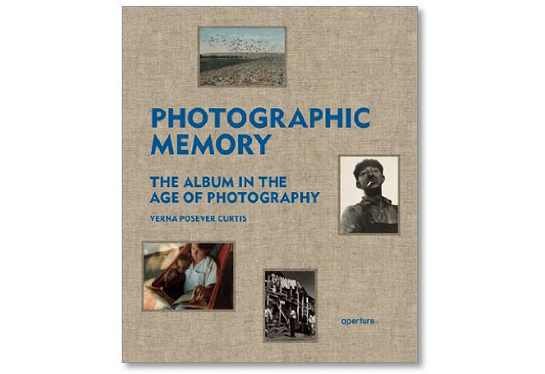Review: Photographic Memory by Verna Posever Curtis

What do you call a book filled with photographs? If you were to ask someone unaffiliated with the world of photography, the answer probably would not be “a photobook”. In all likelihood, it would be “a photo album”. Remember those? Photo albums? If you have a Facebook account, you’ll know that your photos are organized in albums. But if you’ve ever held an actual photo album, you probably know that it’s quite a different beast: The difference is not that it’s an object - versus a label for a way to organize digital images. The difference is that an album can be customized in any which way. You could just stick your prints into the folders, but you could also do all kinds of additional things. So many photo albums ended up being little pieces of art, mirroring their makers ideas and idiosyncrasies. That, in part, is why so many photography fans collect them, buying them up on flea markets or on Ebay. (more)
Thankfully, a new book dedicated to the photographic album, entitled Photographic Memory and co-published by Aperture and the Library of Congress shines new light on the art of compiling a photo album. As can be easily imagined, the Library of Congress hold some very impressive albums in their collection. Seeing them presented here - in the same way that, for example, The Photobook: A History showcases photobooks - is an incredible visual treat, especially since there are pages and pages of spreads from the albums.
Photographic Memory, compiled and edited by Verna Posever Curtis, divides albums into five categories: Souvenirs and Mementos, Presentations, Documents, Memoirs, and Creative Process. Within each category, the albums are presented in chronological fashion. As can be expected the albums are very diverse, but it might come as a surprise to see how many are rather lavish productions. If the making of a photobook is (or actually can be) an art form in itself, producing a photo album certainly is (well, was).
This new book could also be seen as a prime example of the mining of an archive that I discussed earlier on this site. The Library of Congress’ website offer access to their collection via digitized documents and images (which, btw, essentially provides a free additional way to look at the albums in the book), and one can only hope that there will be more projects such as Curtis’.
There is not much more that I can add to this review other than saying that Photographic Memory is a wonderfully stunning achievement, a most welcome addition to the growing literature of books about photobooks, opening up a world previously unseen and probably previously not even considered. Highly recommended.
Photographic Memory, compiled/edited by Verna Posever Curtis, 288 pages, Aperture/Library of Congress, 2011